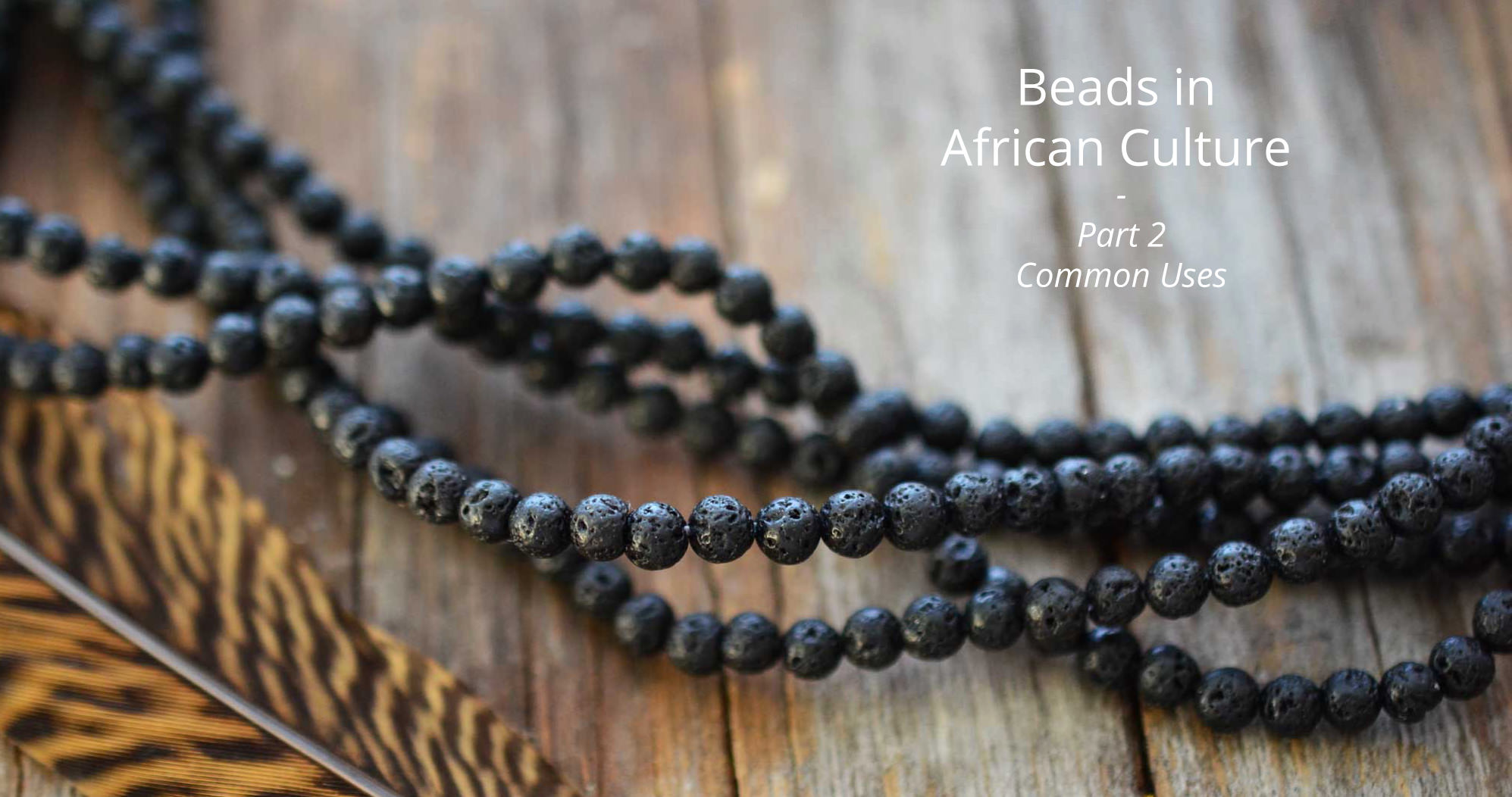Beads in Africa 2: Their Uses
In African culture, beads are for more than just decorative. They are rich with symbolism and have a wide variety of uses across the continent.
Stress Relief
Long before the “fidget spinner” was created as a way to alleviate anxiety, the Greeks used worry beads for relaxation, as an amulet and by those trying to break an addiction. The quality of beads used represents the social status of the wearer, especially is the worry beads are made of silver or amber. Beads are also embedded as rollers in wooded hand-held massage therapy devices.
Currency
Aggri (or Aggrey) beads are a traditional form of currency, exchange and method of payment in Africa. Europeans first collected aggri beads from the West Coast of Africa in the 15th Century and featured heavily in the transactions of slave trade.
Medicinal purposes
Traditional medicine dictates that some beads are made to be worn as adornment then consumed, such as the case of an edible amulet. To this day, many African newborns wear a beaded bracelet for spiritual and physical protection and a bracelet often follows the dead to their graves. There is also a practice of adorning animals for rituals to appease spirits or bring good luck and health.
Gaming
Similar to modern day casino games that use markers and dice, many traditional African games involve beads, and are still popular to this day. Some examples are owari beads for mancala, the Bead Trade Game, Hama beads and the Bead Maze Roller Coaster among numerous others.
Adornment
Wearing or adorning oneself with intricate beadwork was traditionally reserved for members of high status or royalty. In more recent years, beads of all kinds have found their way into modern textiles, design and couture, and is more about individual expression than a designation of status.
Used for souvenirs and to raise awareness
Fundraising with bracelets, bangles and beaded keychains are a few of the hugely popular ways to raise awareness. Millions of “Romy” the rhino beaded bracelets have been sold as souvenirs, and bead makers capitalize on the “must have” trend to spread their message. Romy and other creations are examples of merging traditional African bead making practices with philanthropy. The rhino bracelet draws attention to an ongoing crucial conservation issue.
As you can see, beads in Africa are steeped in tradition but with the merging of contemporary applications have withstood the test of time.




Leave a Reply
Want to join the discussion?Feel free to contribute!